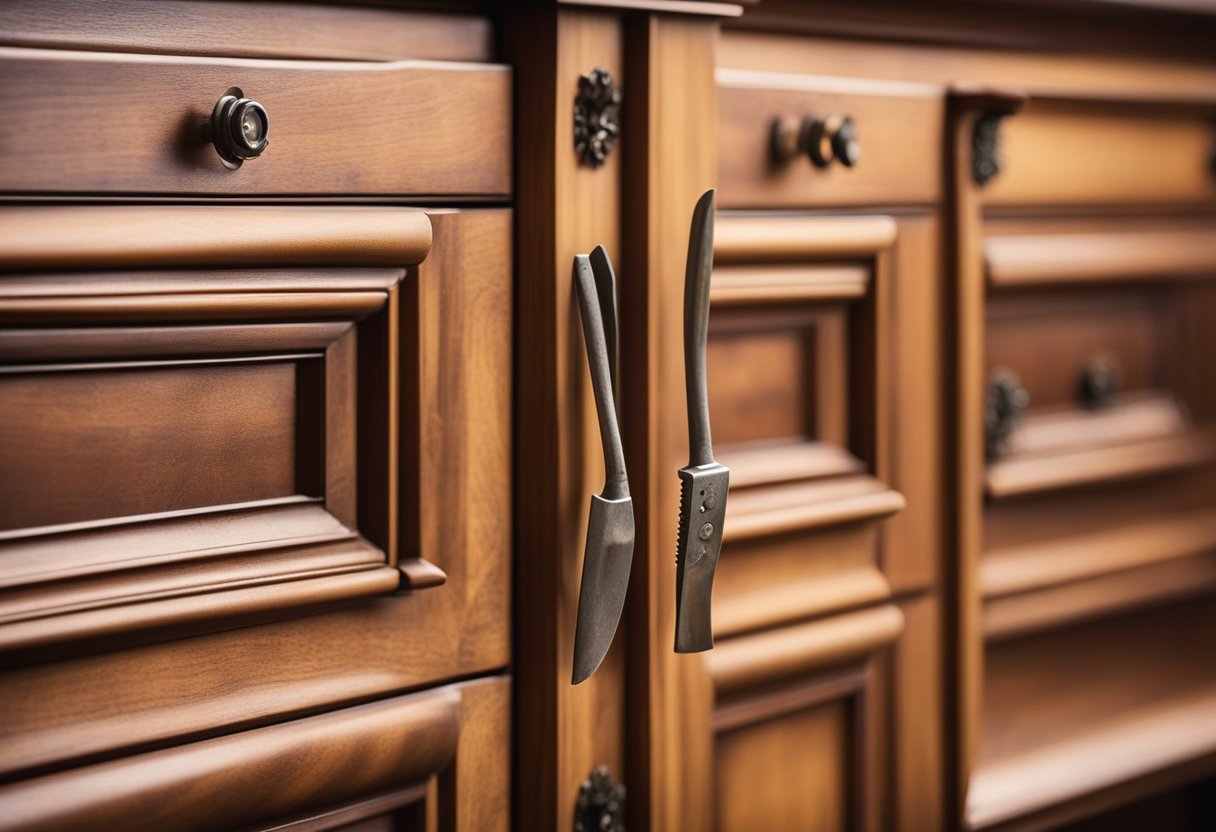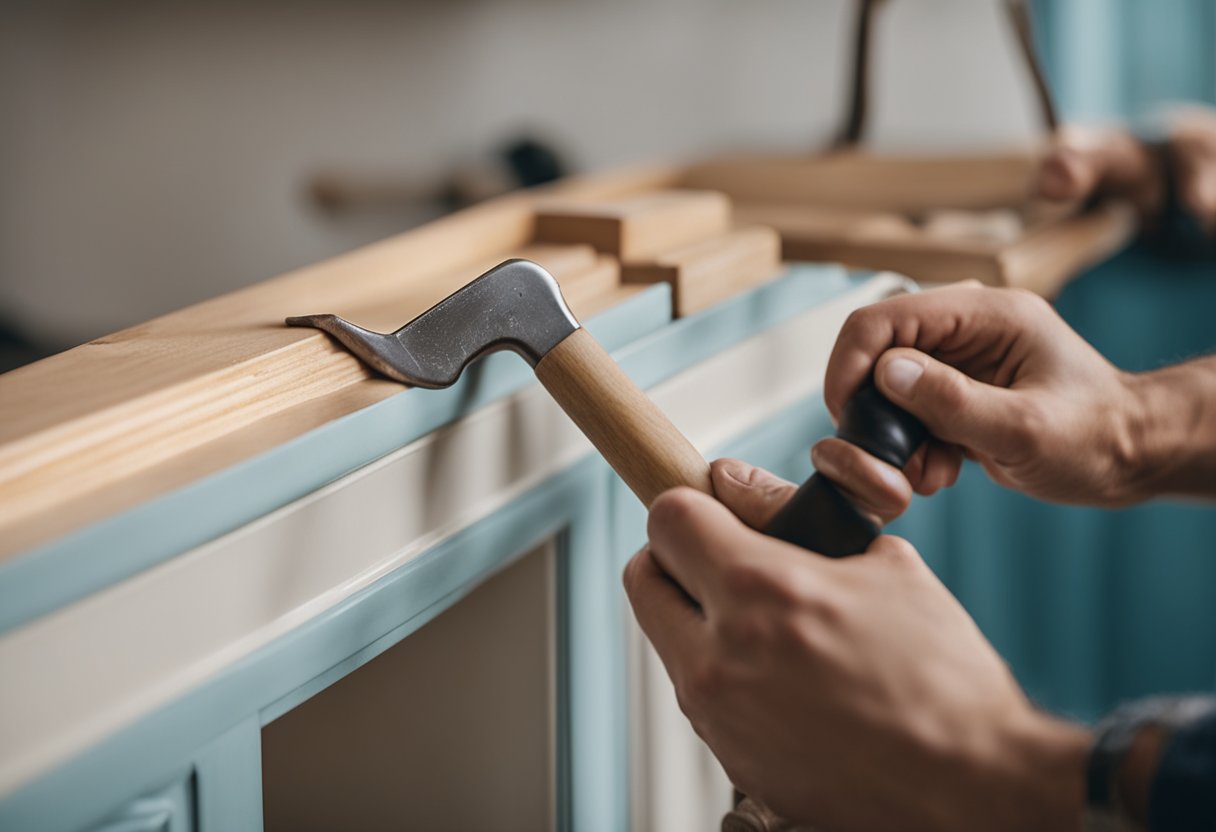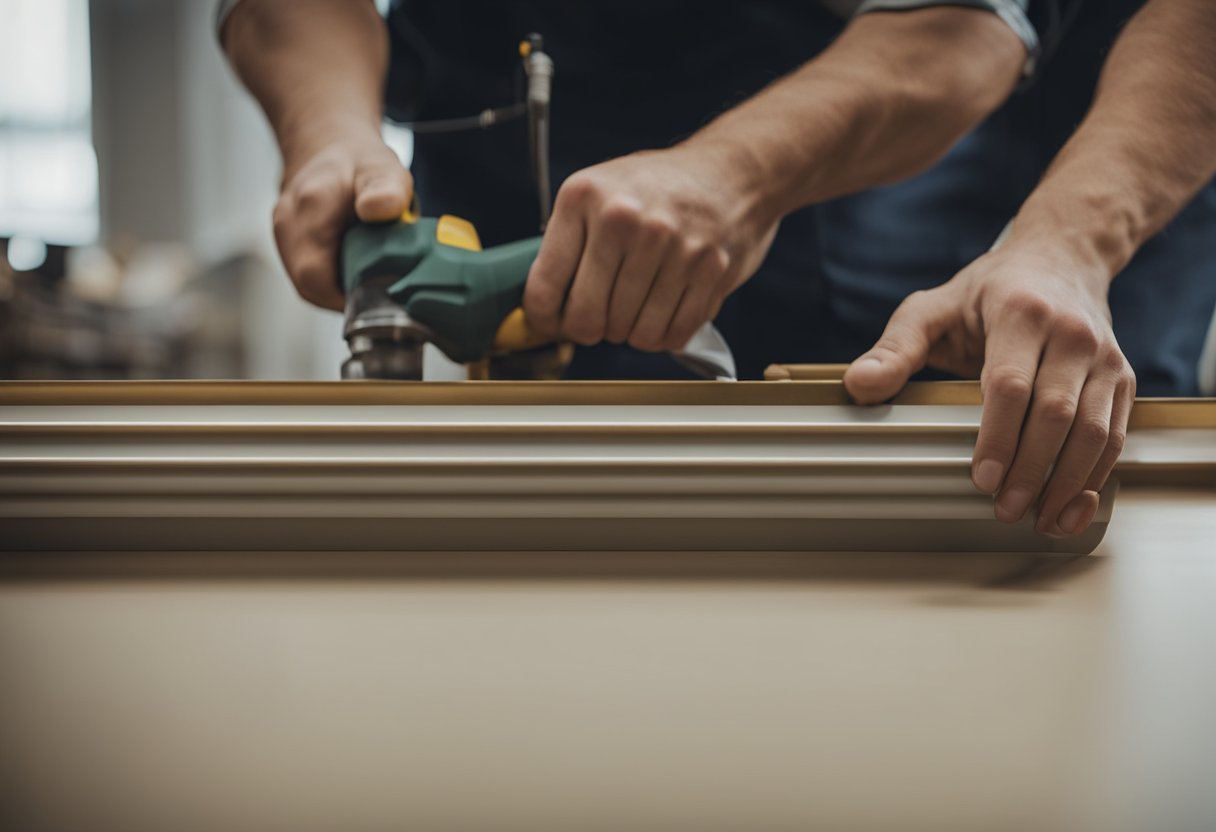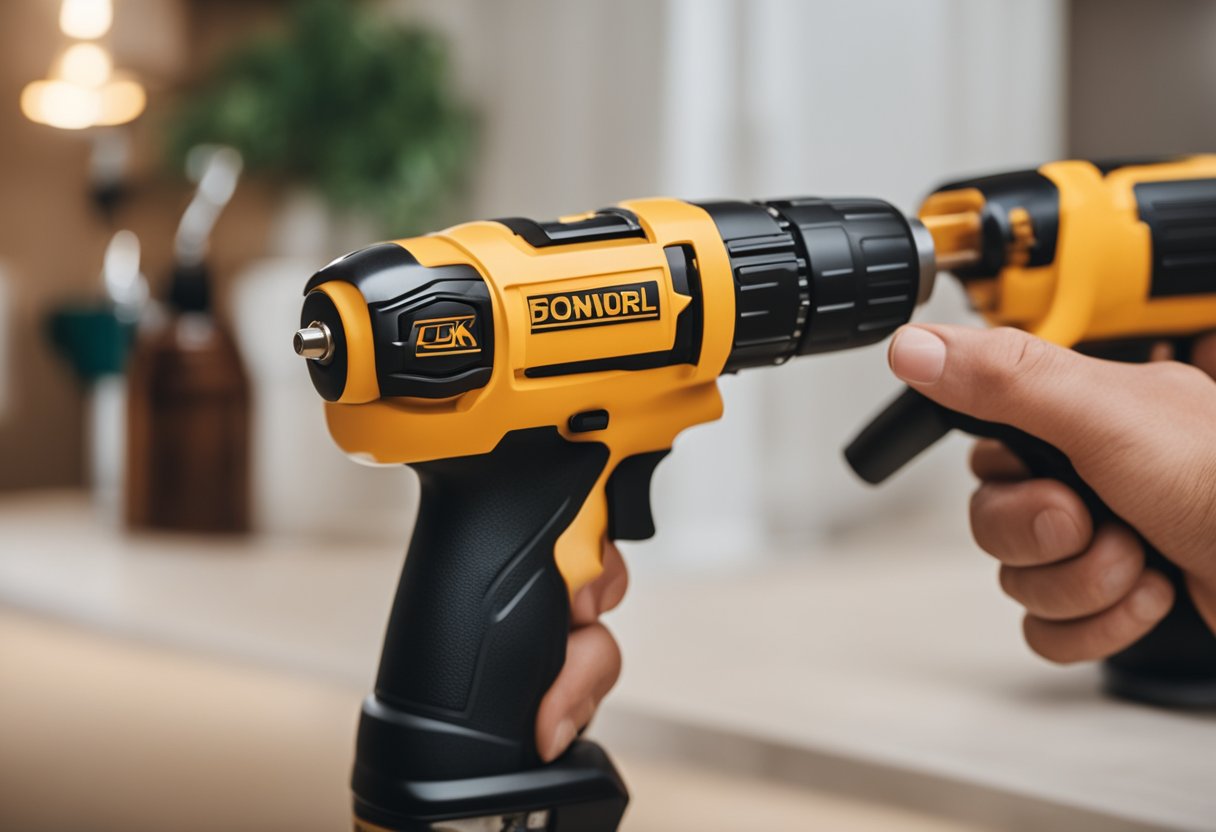Removing decorative molding from furniture can be a challenging task, especially if you have never done it before. Decorative trim or molding is often added to furniture to enhance its aesthetic appeal, but it can also be a source of frustration when it needs to be removed. Whether you are planning to refinish your furniture or you simply want to replace the decorative molding, there are several steps that you can take to remove it safely and effectively.
The first step in removing decorative molding from furniture is to identify the problem. This involves examining the furniture carefully to determine the type of molding that is attached to it, as well as the method used to attach it. Some types of molding may be attached with screws or nails, while others may be glued or stapled in place. Identifying the problem will help you to determine the best method for removing the molding without causing damage to the furniture.
Once you have identified the problem, the next step is to prepare the furniture for removal. This involves gathering the necessary tools and supplies, such as a screwdriver, pliers, and a pry bar. You will also need to protect the furniture from damage by covering it with a drop cloth or plastic sheeting. With the right preparation, you can safely and effectively remove decorative molding from your furniture.
Key Takeaways
- Identifying the problem is the first step in removing decorative molding from furniture.
- Proper preparation is essential to avoid damaging the furniture during the removal process.
- With the right tools and techniques, you can safely remove decorative molding from your furniture.
Identifying the Problem
https://www.youtube.com/watch?v=KHeoeSIpvmA&embed=true
When it comes to removing decorative molding from furniture, the first step is to identify the problem. In some cases, the molding may be damaged or worn and simply needs to be removed and replaced. However, in other cases, the molding may be affected by mold, which can be a more serious issue.
To identify mold on furniture, it’s important to look for signs of discoloration or unusual stains on the wood. Mold can cause the wood to darken or become discolored. You may also notice warped or distorted wood, which can be a sign of prolonged exposure to moisture and mold growth.
If you suspect that there is existing mold on your furniture, it’s important to take action as soon as possible. Mold can be harmful to your health and can cause a range of symptoms, including respiratory issues, allergic reactions, and more.
To determine if you have a mold problem, you can perform a simple test using a piece of clear tape. Simply press the tape onto the surface of the furniture and then peel it off. If you see black or green spots on the tape, it’s likely that you have a mold problem.
Overall, identifying the problem is the first step in removing decorative molding from furniture. By taking the time to properly assess the situation, you can ensure that you take the appropriate action to address any issues and keep your furniture in top condition.
Preparation for Removal
https://www.youtube.com/watch?v=liJ9mcB5Woo&embed=true
Before removing decorative molding from furniture, it is essential to prepare well. Here are the materials and tools that I recommend for the job:
- Utility knife
- Screwdriver
- Hammer
- Pliers
- Putty knife
- Pry bar
- Heat gun
- Nippers
- Flathead screwdriver
First, I recommend inspecting the molding carefully to determine how it is attached to the furniture. If it is attached with screws, use a screwdriver to remove them carefully. Make sure to keep track of where each screw goes so that you can easily reattach the trim later if desired. But make sure to use the correct screwdriver for the type of screws on your furniture.
If the molding is attached with nails, use a flathead screwdriver or a pry bar to remove them. Be careful not to damage the molding or the furniture. If the nails are difficult to remove, use pliers to pull them out.
If the molding is glued to the furniture, use a putty knife to carefully pry it away from the surface. A heat gun can also be used to soften the glue and make it easier to remove.
Once the molding is removed, inspect the furniture for any damage. Use a nippers to remove any remaining nails or screws, and use a putty knife to scrape away any excess glue or adhesive. This will ensure that the surface is smooth and ready for the next step.
By following these simple instructions and using the right tools and materials, you can remove decorative molding from furniture quickly and efficiently.
Removing the Decorative Molding
https://www.youtube.com/watch?v=u09ypfs4g6w&embed=true
When it comes to removing decorative molding from furniture, there are a few things to keep in mind. First, you’ll want to gather the necessary tools for the job. Depending on the type of molding and how it’s attached, you may need a saw, pliers, or a putty knife.
Before you begin, it’s important to inspect the molding and the furniture to determine how the pieces are attached. If the molding is nailed or glued on, you’ll need to remove those fasteners before attempting to remove the molding itself. Use pliers or a pry bar to gently remove any nails or screws holding the molding in place.
Once the fasteners are removed, you can begin to remove the molding itself. Depending on the type of molding, you may be able to simply pry it off with a putty knife or chisel. If the molding is more complex, you may need to use a saw to carefully cut it away from the furniture.
When removing the molding, be sure to work slowly and carefully to avoid damaging the furniture underneath. If you’re having trouble removing the molding, try using a heat gun to soften any adhesive or glue holding it in place.
Overall, removing decorative molding from furniture can be a challenging but rewarding task. With the right tools and a bit of patience, you can transform an old piece of furniture into something new and beautiful.
Mold Removal from Furniture
https://www.youtube.com/watch?v=PFi0qnFUuvo&embed=true
As a furniture owner, it is important to know how to remove mold from wood furniture. Mold growth on furniture is not only unsightly but can also cause health problems. Here are some steps to follow to remove mold from wood furniture:
-
Wear protective gear: Before starting the cleaning process, put on rubber gloves, safety goggles, and an air mask to protect yourself from mold spores that can be harmful to your health.
-
Clean the surface: Use a soft brush or cloth to remove any loose mold from the surface of the furniture. Be careful not to spread the mold spores to other areas.
-
Apply a cleaning solution: Mix a solution of equal parts water and white vinegar or hydrogen peroxide. Apply the solution to the affected area with a soft cloth. Let it sit for 10-15 minutes.
-
Rinse and dry: Wipe the cleaned areas with a clean, damp cloth to remove any residue. Then, thoroughly dry the furniture using a separate dry cloth.
-
Sanding (Optional): If the mold has penetrated deep into the wood or caused stains, you may need to lightly sand the affected areas and then refinish the wooden furniture.
In conclusion, removing mold from wood furniture is not a difficult task if you follow the above steps. With proper cleaning and maintenance, you can prevent mold growth on your furniture and keep it looking new for years to come.
Repair and Replacement
https://www.youtube.com/watch?v=cZTiPeqXChs&embed=true
If you’re looking to remove decorative molding from furniture, you may be doing so because it’s damaged or you want to replace it with new trim. In either case, the process of removal is similar.
First, use a flathead screwdriver to gently pry up the old pieces of trim. If nails are present, use pliers to remove them. Be careful not to damage the underlying wood as you remove the molding.
Once the molding is removed, you can assess the damage to the furniture. If the molding was damaged, you may need to repair it before replacing it. Small cracks can be filled with wood glue and sanded down once dry. Larger areas of damage may require replacement of the damaged section of wood.
When you’re ready to replace the molding, head to your local hardware store to find trim that works best for your furniture. Be sure to measure the width of the area where the molding will be placed to ensure a perfect fit.
When attaching the new molding, use wood glue and clamps to hold it in place while the glue dries. Fill any nail holes with wood filler and sand down once dry.
Overall, removing decorative molding from furniture is a straightforward process that can be done with a few simple tools and some patience. With the right replacement trim and a little bit of know-how, you can give your furniture a fresh new look.
Preventing Future Mold Growth
Once you have removed the decorative molding from your furniture, it is important to take steps to prevent future mold growth. Here are a few tips to help you keep your furniture mold-free:
-
Control Humidity Levels: High humidity levels can promote mold growth, so it is important to keep your home’s humidity levels in check. Use a dehumidifier, ensure proper ventilation, and keep the temperature in your home at a comfortable level.
-
Regular Cleaning: Regular cleaning of your furniture can help prevent mold growth. Use a damp cloth to wipe down your furniture regularly, and make sure to dry it thoroughly afterwards.
-
Apply Mold-Resistant Coatings: Applying a mold-resistant coating to your furniture can help prevent mold growth. These coatings are available in both spray and paint-on forms and can be found at your local hardware store.
-
Keep Furniture Away from Moisture: Moisture can promote mold growth, so it is important to keep your furniture away from sources of moisture. This includes areas of your home that are prone to moisture, such as basements and bathrooms.
By following these simple steps, you can help prevent future mold growth on your furniture. Remember, prevention is key when it comes to mold growth, so take the necessary steps to keep your furniture mold-free.
When to Hire a Professional
Removing decorative molding from furniture can be a challenging task, and in some cases, it’s best to leave it to the professionals. Here are a few scenarios where you might want to consider hiring a professional:
-
Extensive Damage: If the decorative molding is severely damaged, it may require the expertise of a professional to remove it without causing further damage to the furniture. A professional will have the necessary tools and experience to remove the molding without damaging the underlying structure of the furniture.
-
Mold Infestation: If you notice mold on the decorative molding, it’s best to hire a professional mold removal company to handle the job. Mold can be hazardous to your health, and attempting to remove it on your own can be dangerous. A professional mold remediation company will have the necessary equipment and expertise to remove the mold safely and effectively.
-
Time Constraints: Removing decorative molding can be a time-consuming process, especially if you’re not experienced in doing it. If you’re short on time and need the job done quickly, it’s best to hire a professional to handle the job for you. A professional will be able to complete the job quickly and efficiently, allowing you to focus on other tasks.
-
Cost: While it may seem like a good idea to remove decorative molding on your own to save money, it’s important to consider the cost of materials and the time it will take to complete the job. In some cases, it may be more cost-effective to hire a professional to handle the job. A professional will have the necessary tools and experience to complete the job quickly and efficiently, saving you time and money in the long run.
In summary, while it may be tempting to remove decorative molding on your own, there are situations where it’s best to hire a professional. If you’re dealing with extensive damage, mold infestation, time constraints, or cost concerns, it’s best to leave the job to the experts.
Frequently Asked Questions
What are the tools needed to remove decorative molding from furniture?
To remove decorative molding from furniture, you will need a few tools, including a hammer, chisel, putty knife, pliers, and a pry bar. You may also need a drill with a small bit to remove any screws holding the molding in place.
How can you safely remove decorative metal from furniture?
To safely remove decorative metal from furniture, you should first determine how it is attached. If it is screwed in place, you can use a screwdriver to remove the screws. If it is glued or nailed in place, you may need to use a chisel or pry bar to carefully remove it. Be sure to wear gloves and eye protection to avoid injury.
What is the best way to remove glued drawer fronts?
To remove glued drawer fronts, you can use a hair dryer to heat the glue and soften it. Then, use a putty knife or chisel to gently pry the drawer front away from the drawer. Be sure to work slowly and carefully to avoid damaging the drawer or the front.
How do you pull trim without damaging the furniture?
To pull trim without damaging the furniture, you should use a pry bar or chisel to carefully loosen the trim. Be sure to work slowly and gently to avoid damaging the furniture. If the trim is glued in place, you can use a hair dryer to soften the glue before attempting to remove it.
What are the steps for removing molding from cabinet doors?
To remove molding from cabinet doors, you should first determine how it is attached. If it is screwed in place, you can use a screwdriver to remove the screws. If it is glued or nailed in place, you may need to use a chisel or pry bar to carefully remove it. Be sure to work slowly and carefully to avoid damaging the door or the molding.
Is there a way to remove decorative molding without leaving marks on the furniture?
To remove decorative molding without leaving marks on the furniture, you should use a pry bar or chisel to carefully loosen the molding. Be sure to work slowly and gently to avoid damaging the furniture. If the molding is glued in place, you can use a hair dryer to soften the glue before attempting to remove it. Once the molding is removed, you may need to sand or touch up the area to remove any remaining marks.

Hi, I’m Sal Muller of Tooltrip.com. My DIY experience led me to understand essential power tools for home projects. Tooltrip.com guides enthusiasts and professionals in choosing right tools for any job. I provide concise top tool reviews for easier, efficient DIY.





